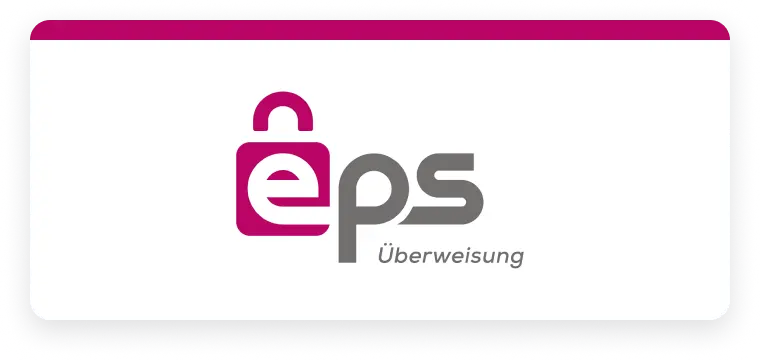Top 6 payment methods in Europe in 2024

If you’ve ever shopped online or done business in Europe, you’ve probably noticed the wide variety of payment methods available. The European market offers various options to cater to different preferences. In this article, we’ll look at the top six payment methods used by Payop users in Europe. We’ll highlight the advantages of each method and explain how they benefit both consumers and businesses.
Payop’s Pay by Bank

Pay by Bank is a convenient and secure open banking solution that allows consumers to make payments straight from their bank accounts, eliminating the need to share sensitive card details.
Payop’s Pay by Bank provides both instant and non-instant payments in the UK, Germany, France, Netherlands, Finland, Lithuania, Estonia, Italy, Spain, and Portugal. You can be incorporated anywhere, operate anywhere and accept payments in Europe without holding a bank account in the EU. Payop will receive money in its bank account and send instant confirmation via API.Pay by Bank is gaining popularity across Europe because of its simplicity and advanced security. In addition, businesses benefit from reduced risk of chargebacks and fraud, resulting in cost savings. The widespread adoption of Pay by Bank also provides a broader customer reach, making it attractive to e-commerce businesses.
EPS

EPS is an online payment system widely used in Austria. Like the previous method, it allows consumers to pay for goods and services directly from their bank accounts. They don’t need to undergo additional registrations or worry about their bank details since the data is not shared with third parties. That’s why this method is favoured for its simplicity and reliability.
For businesses targeting the Austrian market, integrating EPS can increase customer satisfaction and expand the customer base. Local payment methods like this demonstrate a commitment to providing a tailored experience to consumers in specific regions.
Neosurf

Neosurf is a prepaid card system popular in many European countries. It allows consumers to make online payments without needing a bank account or credit card. Users can purchase Neosurf vouchers at various retail locations and use them to pay online, providing a high level of privacy and security.
For businesses, Neosurf offers access to a customer base that prefers or requires alternative payment methods. It is particularly beneficial for sectors like gaming and entertainment, where users may seek quick and anonymous payment options.
PayDo EWallet

PayDo EWallet is a versatile digital wallet that supports multiple currencies and payment methods. It allows consumers to store funds, make online payments, and transfer money to others easily. The wallet integrates with various payment gateways and offers a seamless checkout experience.
Businesses benefit from PayDo EWallet’s wide acceptance, low transaction fees, and enhanced security features. It is an excellent option for e-commerce platforms looking to provide customers with a flexible and secure payment solution.
CashtoCode

CashtoCode is another payment method that enables customers to pay for online purchases with cash. Users receive a barcode when making a purchase online, which they can then take to a participating retailer to pay in cash. Once the payment is made, the transaction is confirmed online.
CashtoCode is especially advantageous for consumers who prefer using cash or do not have access to traditional banking services. For businesses, it opens up new customer segments and reduces the risk of chargebacks and fraud associated with card payments
Revolut

Last but not least on our list is Revolut, which offers personal and business solutions to its clients. As a payment method, it gives merchants several key advantages.
Firstly, it supports over 25 currencies, including crypto, simplifying international transactions and reducing currency conversion costs. Businesses benefit from competitive exchange rates and real-time transaction notifications, which boost fraud detection.
Recognisability, ease of use and the trust of Revolut’s large European customer base make this payment method a competitive advantage for merchants.
Learn about the top eight payment methods in the Asian market.
Payment trends in the European market
The payment landscape, in general and in Europe in particular, is constantly evolving, with new technologies appearing every year. However, there are several emerging trends actively shaping the future of transactions:
- Biometric authentication, such as fingerprint and facial recognition, is being increasingly integrated into payment systems. This technology enhances security by ensuring that only the authorised user can complete transactions. Additionally, it optimises the user experience by providing a quick and simple way to authenticate payments without passwords or PINs.
- Contactless payments have become increasingly popular due to their convenience and speed. They allow consumers to make quick payments by simply tapping their card or mobile device near a payment terminal. This method is particularly favoured in a post-pandemic world, where reducing physical contact is a priority for many.
- Buy Now, Pay Later (BNPL) services are becoming a popular alternative to traditional credit. They allow consumers to split their purchases into manageable instalments without interest. This payment method appeals to younger consumers who prefer flexible spending options and can help businesses increase sales by reducing the barrier to purchase.
- Mobile wallets, such as Apple Pay, Google Wallet, and Samsung Pay, are becoming increasingly popular for their ease of use and security. They allow users to store multiple payment methods on their smartphones and make payments quickly with just a tap.
Read about the top 15 payment methods in the e-commerce industry.
Factors to consider when choosing a payment method
Selecting the payment method for your business can be crucial for success in the European market. Here are some aspects to consider:
- Customer preferences: Research your target audience and their preferred payment methods. Offering local options can increase the attractiveness of your business.
- Security: Prioritise the security of customer data and transactions. Ensure that your chosen payment method meets industry standards.
- Costs: Consider each payment method’s processing and potential currency conversion fees.
- User Experience: Opt for payment methods that provide convenience to users, reducing cart abandonment.
The European payment landscape offers a vast number of options. With the six described payment methods, you can meet the diverse preferences of European consumers, build trust and optimise payment processes. Remember, though, that your choice depends on your specific business goals and target markets.









